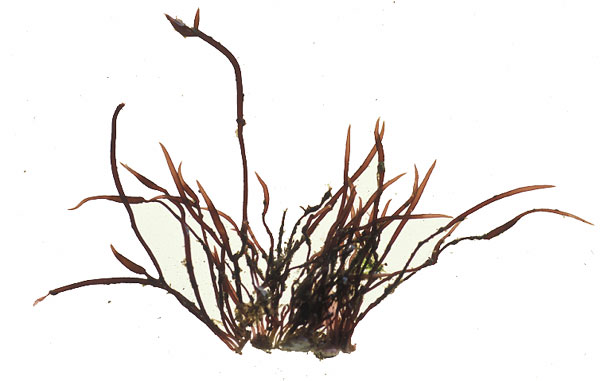Cordylecladia erecta (Greville) J. Agardh
 Description: Narrow cylindrical, cartilaginous, brownish-red
fronds, to 100 mm high, in tufts from thin, spreading, discoid base often
hidden below sand. Sparingly subdichotomously branched, branches tapering
to fine point.
Description: Narrow cylindrical, cartilaginous, brownish-red
fronds, to 100 mm high, in tufts from thin, spreading, discoid base often
hidden below sand. Sparingly subdichotomously branched, branches tapering
to fine point.
Habitat: On sand-covered rocks, low intertidal and subtidal,
widely distributed, frequently overlooked. Southern and western coasts (very
rare in NE England and E Scotland) north to Shetland.
Similar species: Frequently confused with Gracilaria gracilis, which does not have an expanded crustose
base. Cordylecladia erecta is smaller, generally
stands erect and has a brownish rather than a purplish-red colour. Plants
of Gracilariopsis lemaneiformis may have
irregularly sollen areas when growing in sand or shell-sand. Reproductive
plants of Cordylecladia erecta are only found in
winter when the reproductive structures occur in swollen, often spindle-shaped
areas near the tips of the fronds.
Link: AlgaeBase





